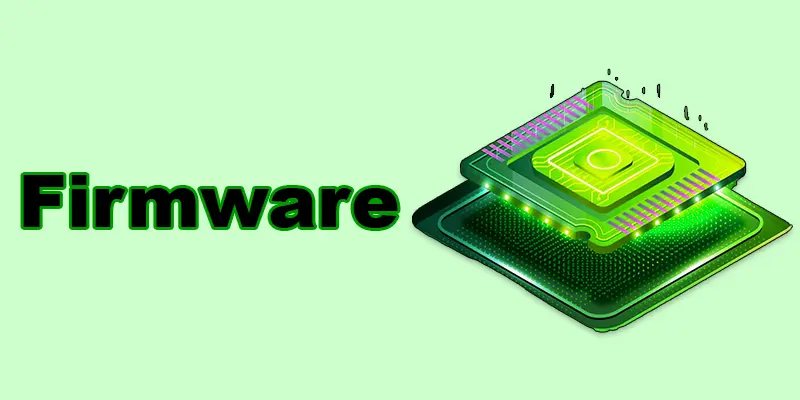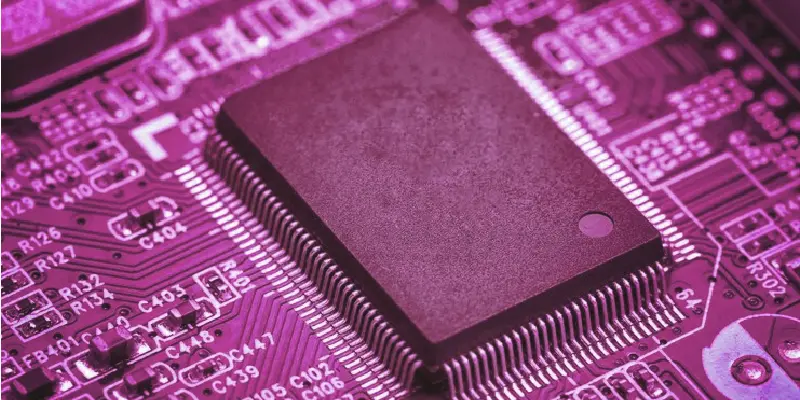What is Firmware? Its Example, Types, and History, Work, Security
Published: 14 Jan 2025
What is Firmware?
Firmware is a type of software that acts as the operating instructions for a device. It’s stored on the device itself, like in a small memory chip, and helps the device know how to work properly. Unlike regular software that you can install or update often, firmware is designed to be permanent or rarely changed. It’s essential for things like computers, phones, printers, and even appliances like microwaves to function correctly. Firmware bridges the gap between the hardware and the software, making sure all parts of the device work together as they should.
Example of Firmware
- Smartphones control basic phone functions
- Washing machines manage wash cycles and settings
- Printer’s direct printing and scanning tasks
- TV remotes enable button functions
- Digital cameras handle photo-taking and settings
- Wi-Fi routers manage internet connections
Firmware Definition
Firmware is special software built into a device that helps it work properly. It gives the device basic instructions and stays stored in the device’s memory, so it doesn’t need to be updated often.
How does Firmware Work?
- Stored in the device: Firmware is built into the device’s memory, like a small chip.
- Provides basic instructions: It gives the device essential instructions to function correctly.
- Controls hardware actions: Firmware tells the hardware how to operate, like when to turn on or off.
- Works as a bridge: It connects the hardware and software, helping them communicate smoothly.
- Rarely needs updates: Unlike regular software, firmware usually doesn’t need frequent updates, as it’s designed to be stable.
History of Firmware
The history of firmware is closely tied to the development of technology and how devices became smarter over time.
- Early Years (1960s-1970s): Firmware started as a “microcode,” which was used to control the early computers and hardware. It was built directly into the devices to make them function properly.
- 1980s – ROM and EPROM: In the 1980s, firmware began being stored in ROM (Read-Only Memory) chips, which were built into devices and couldn’t be changed. Later, EPROM chips were developed, allowing firmware to be erased and reprogrammed, making updates possible.
- 1990s – Flash Memory: By the 1990s, flash memory became popular for storing firmware. It allowed easier updates and improvements to be made without needing to replace hardware.
- 2000s – Embedded Systems: During the 2000s, firmware became crucial in embedded systems, like in cars, medical devices, and home appliances, where it helped control specific functions of the device.
- Today: Today, firmware is used in almost every device, from smartphones to smart home gadgets. It is regularly updated to improve security, add features, and fix bugs.

Types of Firmware
Firmware can be classified into three main types: low-level, high-level, and subsystem.
Low-Level Firmware
Low-level firmware is the basic software built into a device, stored in memory that can’t be easily changed, like ROM. It provides essential instructions for the device to run, such as how to start up or control basic hardware functions. This type of firmware is typically fixed and rarely updated. Devices that use low-level firmware usually operate on one-time programmable memory, meaning the software can’t be altered once it’s set.
High-Level Firmware
High-level firmware is more advanced software stored in flash memory, which can be easily updated. It helps the device perform more complex tasks and supports additional features compared to low-level firmware. This type of firmware allows for updates, meaning new instructions or improvements can be added when needed. Devices with high-level firmware can handle more detailed operations and run complex software.
Subsystem Firmware
Subsystem firmware is used in specific parts of a device, usually to control smaller functions. It is commonly found in embedded systems, like appliances or cars. This firmware is stored in memory that can be updated, and it works closely with hardware to ensure everything runs smoothly. Subsystem firmware helps the main system by managing specific tasks, such as controlling a motor or sensor, while the device operates as a whole.
Firmware Security
Firmware security refers to protecting the firmware from unauthorized access or tampering. Since firmware controls essential functions of a device, any security vulnerability can be dangerous. Hackers could modify it to cause malfunction or steal information. Securing firmware ensures that it remains safe from attacks and works as intended.
To keep firmware secure, manufacturers use encryption and authentication methods to prevent unauthorized changes. Regular updates are also important to fix any discovered vulnerabilities. Firmware security helps maintain the reliability and safety of devices, from smartphones to critical systems like medical equipment or cars.
Why are firmware updates important for enterprises?
Firmware updates are important for enterprises for several reasons:
- Security: Updates fix vulnerabilities that could be exploited by hackers, helping protect sensitive data and systems.
- Improved Performance: Updates can optimize device functions, making equipment run more efficiently and faster.
- Bug Fixes: Firmware updates resolve any software bugs or errors that could cause devices to malfunction.
- Compatibility: Firmware updates ensure that devices work well with other new hardware or software, maintaining smooth operations across systems.

What is Embedded Firmware?
Embedded firmware is a type of software built into devices to control specific functions. Unlike regular software, it’s designed to work with the hardware in embedded systems, like cars, appliances, and medical devices. This firmware helps the device perform its primary tasks, like controlling sensors or motors, without the need for user interaction.
It is stored in the device’s memory, often in read-only memory (ROM) or flash memory, and typically doesn’t change often. Embedded firmware is essential for devices that need to operate reliably over long periods with minimal updates. It’s a critical part of many modern systems, enabling them to work efficiently and automatically.
Difference between Firmware and Software
| Firmware | Software |
|---|---|
| Basic code that controls hardware functions. | Programs or applications that run on a device. |
| Printer firmware, smartphone bootloader. | Web browsers, games, office applications. |
| Saved in non-volatile memory like ROM and flash storage. | Stored in volatile memory (e.g., RAM, hard drive). |
| Usually not updated often, fixed after manufacturing. | Can be updated regularly by the user or developer. |
| Manages hardware and allows it to work properly. | Performs tasks and provides functionality to the user. |
Conclusion about Firmware
Firmware is an essential part of modern devices, acting as the bridge between hardware and software. It controls basic functions and ensures that devices operate smoothly. While it doesn’t change often, firmware updates are crucial for improving performance and security. Without firmware, many of our everyday devices wouldn’t function as efficiently or effectively.
FAQS – Firmware Software
Firmware controls the basic functions of a device, allowing it to operate correctly.
Firmware helps IoT devices perform their specific tasks and communicate with other devices effectively.
A firmware update is a process of upgrading the device’s firmware to improve performance or fix issues.
Yes, firmware is a type of software, but it specifically controls hardware functions.
In C programming, firmware is written to control hardware directly, often using low-level code.

- Be Respectful
- Stay Relevant
- Stay Positive
- True Feedback
- Encourage Discussion
- Avoid Spamming
- No Fake News
- Don't Copy-Paste
- No Personal Attacks

- Be Respectful
- Stay Relevant
- Stay Positive
- True Feedback
- Encourage Discussion
- Avoid Spamming
- No Fake News
- Don't Copy-Paste
- No Personal Attacks





